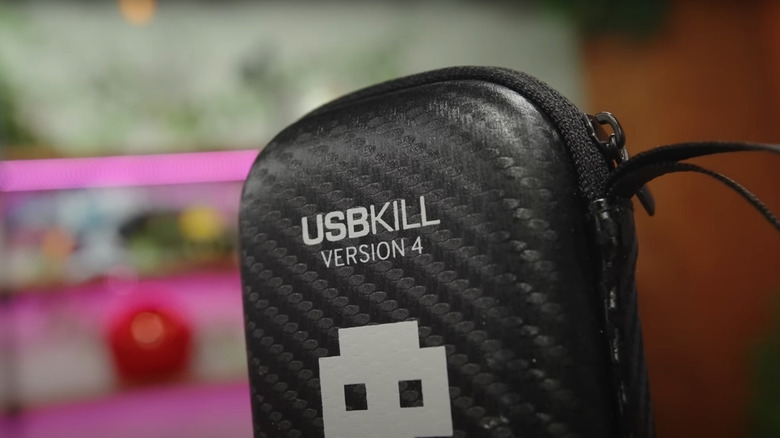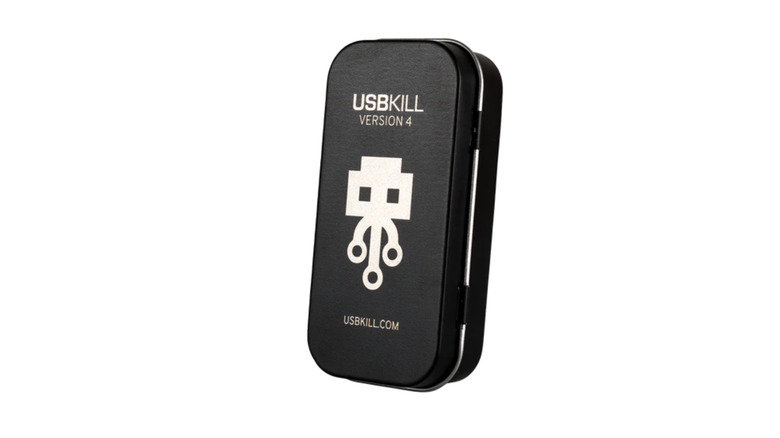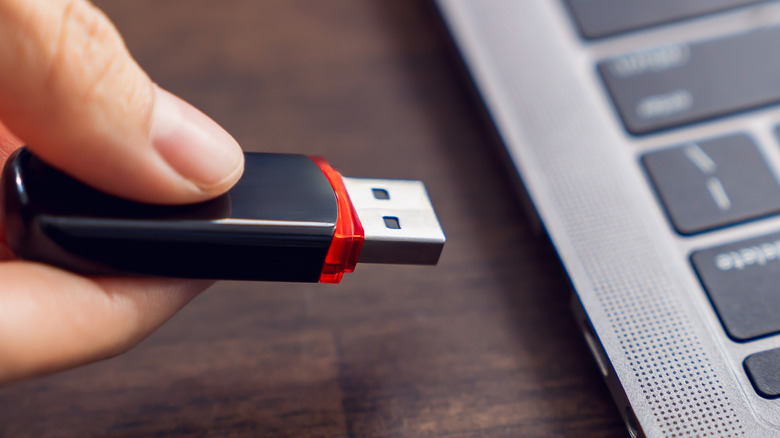USB Kill Sticks Explained — Do They Really Work?
The USB flash drive has become a ubiquitous storage medium that is both cost-effective and easy to use. Available in numerous shapes and sizes, these plug-and-play gadgets are great for uploading common file formats to a computer, smartphone, or smart TV, including photos, videos, and music. But what if we told you that you can invest in something called a USB kill stick, a device designed to sabotage whatever hardware you've connected it to?
It sounds like a plot straight out of a sci-fi action thriller, but USB kill sticks (or USB killers) are very much a thing. Even a quick search on Amazon will return numerous results for this type of product. The technology is relatively simple: When connected, a USB killer sends a series of electrical surges to the host, an attack strategy that renders most hardware inoperable. Some of the most advanced USB killers on the market can even be triggered remotely, and some models feature built-in batteries that allow you to attack devices that are turned off.
Do they really work? The answer to that question is a resounding yes. So if you happen to own one or are thinking of taking the leap with one of these assassin devices, you'd better make sure it's not hanging out in a junk drawer with the rest of your pedestrian flash drives — the consequences could be fatal.
USB kill sticks: Dangerous or just misunderstood?
Frankenstein's monster didn't murder folks because it wanted to: The dang creature was conditioned to do so. Literary hyperbole aside, this is the nature of the beast when it comes to USB kill sticks, too. In fact, the vast majority of USB killers on the market are intended for stress-testing everyday tech like laptops, phones, tablets, etc.
It's actually a process called "pentesting," where the USB killer plays the part of an authorized cyberattack. This allows hardware developers, law enforcement, and other humane parties to observe how the victimized hardware reacts when under siege. It's essential to locate system weak points before a product is available to the masses, and a USB kill stick is an excellent tool for the job. This isn't to say that an evildoer can't use a USB killer with malice in mind. But it helps to paint a much nicer picture of the kill stick industry when you know these devices aren't meant for no-rhyme-or-reason destruction.
USB safety tips for everyday users
A conventional USB flash drive isn't going to wreak havoc on your go-to tech hardware, but you should still exercise caution when using these storage devices. Leaving a flash drive out in the open is a quick way to get it snagged by malcontents, so make sure it's tucked away when you're not using it. Some folks will even attach USB drives to a keyring or lanyard for added protection.
You may want to consider encrypting files and folders for another layer of security. Doing so can lock your content behind credentials only you have access to, making it much harder for a thief to unpack these uploads. It's also a good idea to get in the habit of ejecting your USB drive before unplugging it to prevent files from being corrupted. This is usually as simple as right-clicking the drive icon on your computer, then clicking "Eject" (or "Dismount," or a similar term).
If you want to keep your private data off the internet, it's never wise to connect a USB flash drive to a public computer. But if your laptop is on the fritz, the library might be your only option. To that end, your best bet on a public device is to email files to yourself or upload them to a cloud server — and be sure to sign out of any and all applications before leaving. (here's how to see if someone is secretly logging int to your Gmail account).


